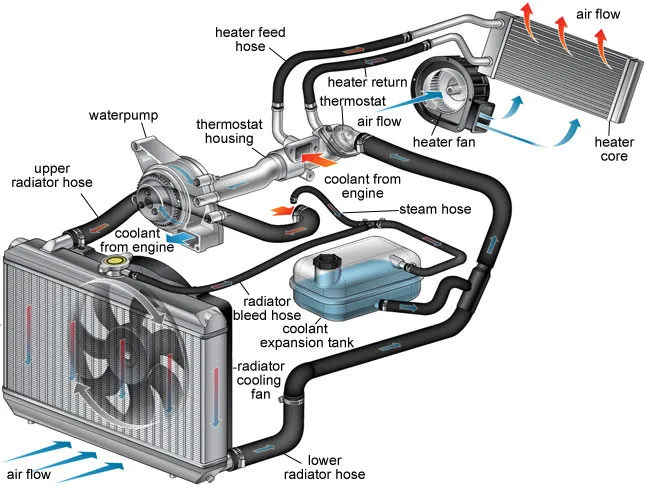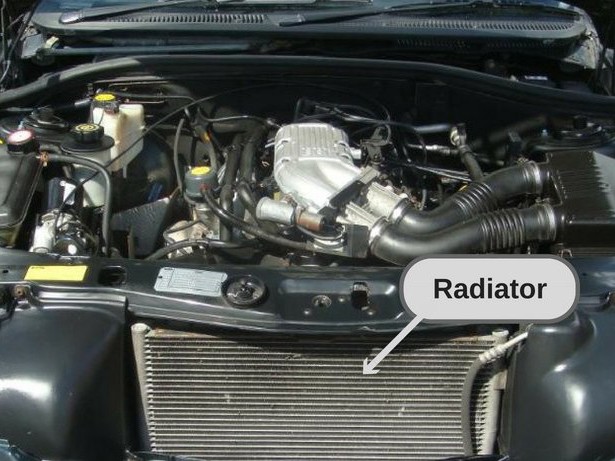How does a Radiator Work?
The radiator has many flat and thin pipes arranged horizontally under one another. Water flows through these pipes along the length of these pipes. But how can the water passing through these pipes become so fast? So to increase the heat exchange from water to air, we have fins brazed between the flat surfaces of these pipes. These fins between the pipes look like a dense sine wave (trigonometric function). Thus increasing the surface area that comes in contact with air and increasing the heat exchange.

Is it all we have in a radiator to exchange heat? No, we are not done yet.
High-end car radiators are a bit more sophisticated, we have fins like structures inside the radiator pipes. Adding these substances creates turbulence in the water flowing through them. The water passing through the pipe without internal fins is streamlined. Therefore, heat exchange will occur between the outer layer of water and the air. As the outer layer of water cools, the temperature difference between air and water is reduced, so the rate of heat exchange will decrease.
Whereas in the radiator pipes with internal fins, water molecules that exchange heat with air get mixed up with hot water, due to turbulence created by these fins. So as to keep the temperature of the whole water uniform and high. In this way, more heat can be exchanged, and the coolant is cooled at a very fast rate.
What is the function of a pressure cap in a Radiator?
Temperature of engine goes way much higher than 100 degree centigrade, and water is used as a coolant in cars. But the water starts boiling at 100 degrees and gets converted into steam. And steam does not exchange heat at a good pace. So how water can be used as a coolant.
To solve this problem pressure caps are introduced in a radiator. Pressure cap does not allow the pressure formed in the radiator to escape created by hot water coming from the engine. Thus there is an increase in pressure inside radiator as water get’s hotter. We know that if a liquid is heated at a higher pressure, its boiling point will increase. Therefore, the pressure cap increases the boiling point of water and remains liquid at temperatures above 100 degrees Celsius.
You must also know?
We add anti-freezing additives to the water to prevent it from freezing in winters, especially in Europe, and to prevent the engine from corrosion.













